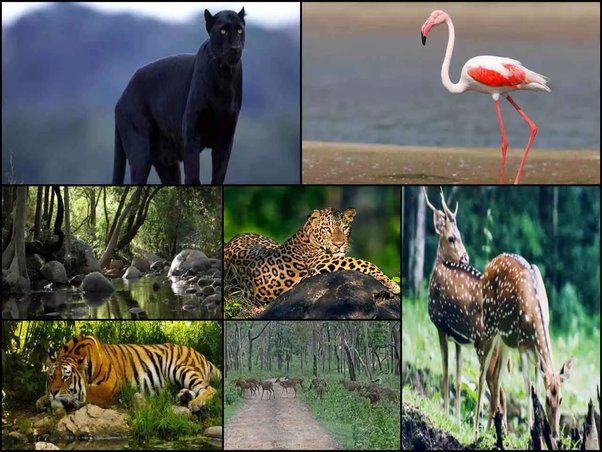Protecting Wildlife: The Essential Role of Animal Sanctuaries

News Mania desk/Agnibeena Ghosh/5th June 2024
In a world increasingly encroached upon by human activity, the need for animal sanctuaries has never been more urgent. These havens provide refuge for countless species, safeguarding them from the threats of habitat destruction, poaching, and human-wildlife conflict. Animal sanctuaries play a critical role in conservation, education, and the ethical treatment of animals. This article delves into the importance of these sanctuaries and the vital functions they serve in preserving biodiversity and promoting animal welfare.
A Safe Haven for Endangered Species
Animal sanctuaries are often the last refuge for endangered and vulnerable species. As natural habitats are destroyed due to urban expansion, agriculture, and deforestation, many animals find themselves with nowhere to go. Sanctuaries provide these animals with a safe environment where they can live free from the immediate threats of extinction.
For example, big cats like tigers and lions, which face severe threats from poaching and habitat loss, find refuge in sanctuaries where they can live in conditions that closely mimic their natural habitats. Similarly, sanctuaries for elephants, rhinos, and primates offer protection against poachers and illegal wildlife trade.
Promoting Animal Welfare
Animal sanctuaries are dedicated to the welfare of the animals they house. Unlike zoos, which often focus on exhibiting animals to the public, sanctuaries prioritize the well-being and natural behavior of their inhabitants. This means providing ample space, appropriate diets, and enrichment activities that stimulate physical and mental health.
Many animals in sanctuaries come from backgrounds of neglect, abuse, or exploitation. Sanctuaries offer these animals a chance to recover and live out their lives in peace. For instance, rescued circus animals or those from illegal pet trades receive the care and rehabilitation they need to thrive again.
Conservation and Research
Sanctuaries also play a pivotal role in conservation efforts. By providing a controlled environment, they enable researchers to study endangered species up close. This research can lead to better understanding of the species’ needs and the development of strategies to protect them in the wild.
Conservation programs often include breeding initiatives aimed at increasing population numbers of endangered species. For example, some sanctuaries have successfully bred and reintroduced animals like the California condor and the Arabian oryx back into their natural habitats, significantly boosting their chances of survival.
Educational Outreach
Education is a cornerstone of many animal sanctuaries. By educating the public about the plights faced by various species, sanctuaries foster a greater appreciation for wildlife and the importance of conservation. Educational programs often include guided tours, informational displays, and interactive activities that teach visitors about the animals and the challenges they face in the wild.
Sanctuaries often collaborate with schools and community organizations to promote environmental stewardship and wildlife conservation. These efforts help to inspire future generations to take action in protecting the planet’s biodiversity.
Ethical Alternatives to Zoos
Animal sanctuaries offer a more ethical alternative to traditional zoos. While zoos often face criticism for keeping animals in captivity for entertainment, sanctuaries focus on providing a natural and safe environment for animals to live out their lives. The primary goal of a sanctuary is not to attract visitors but to ensure the animals’ health and happiness.
Sanctuaries also advocate for the ethical treatment of animals globally. By highlighting the suffering caused by activities like poaching, illegal wildlife trade, and habitat destruction, they raise awareness and promote changes in policies and attitudes toward wildlife conservation.
Challenges Faced by Sanctuaries
Despite their noble mission, animal sanctuaries face numerous challenges. Funding is a significant issue, as the care and upkeep of animals require substantial financial resources. Many sanctuaries rely on donations, grants, and volunteer support to sustain their operations.
Another challenge is the increasing number of animals in need of sanctuary due to habitat loss and human activities. Sanctuaries must constantly expand and adapt to accommodate more animals, which can strain their resources.
Animal sanctuaries are vital to the preservation of wildlife and the promotion of animal welfare. They offer a sanctuary for endangered species, promote ethical treatment, contribute to conservation and research, and educate the public about the importance of protecting our planet’s biodiversity. As human activities continue to threaten wildlife, the role of sanctuaries becomes ever more critical. Supporting these sanctuaries through donations, volunteering, and advocacy is essential to ensuring that they can continue their invaluable work. In a world where the survival of many species hangs in the balance, animal sanctuaries provide a beacon of hope and a testament to our capacity for compassion and stewardship.






